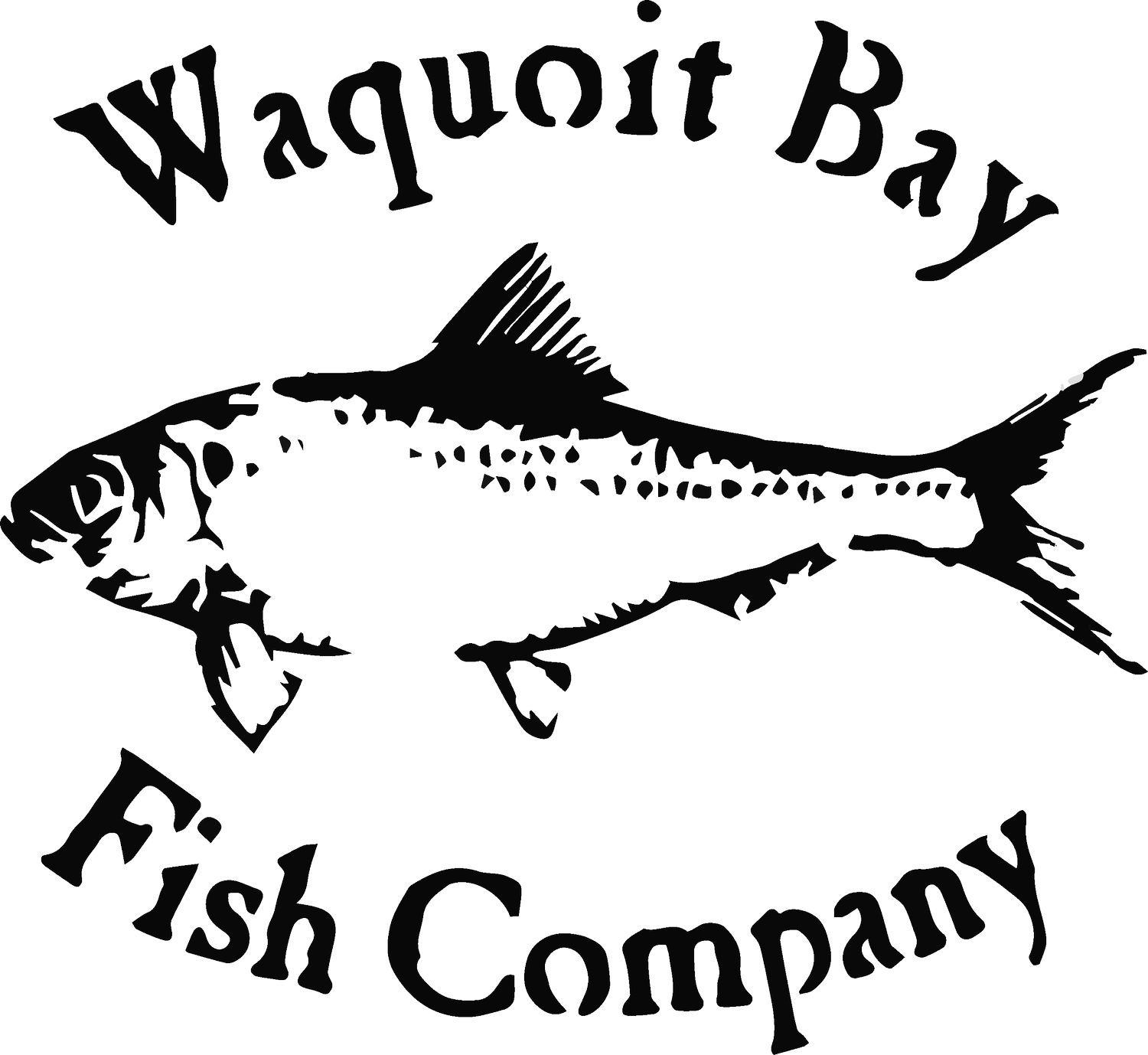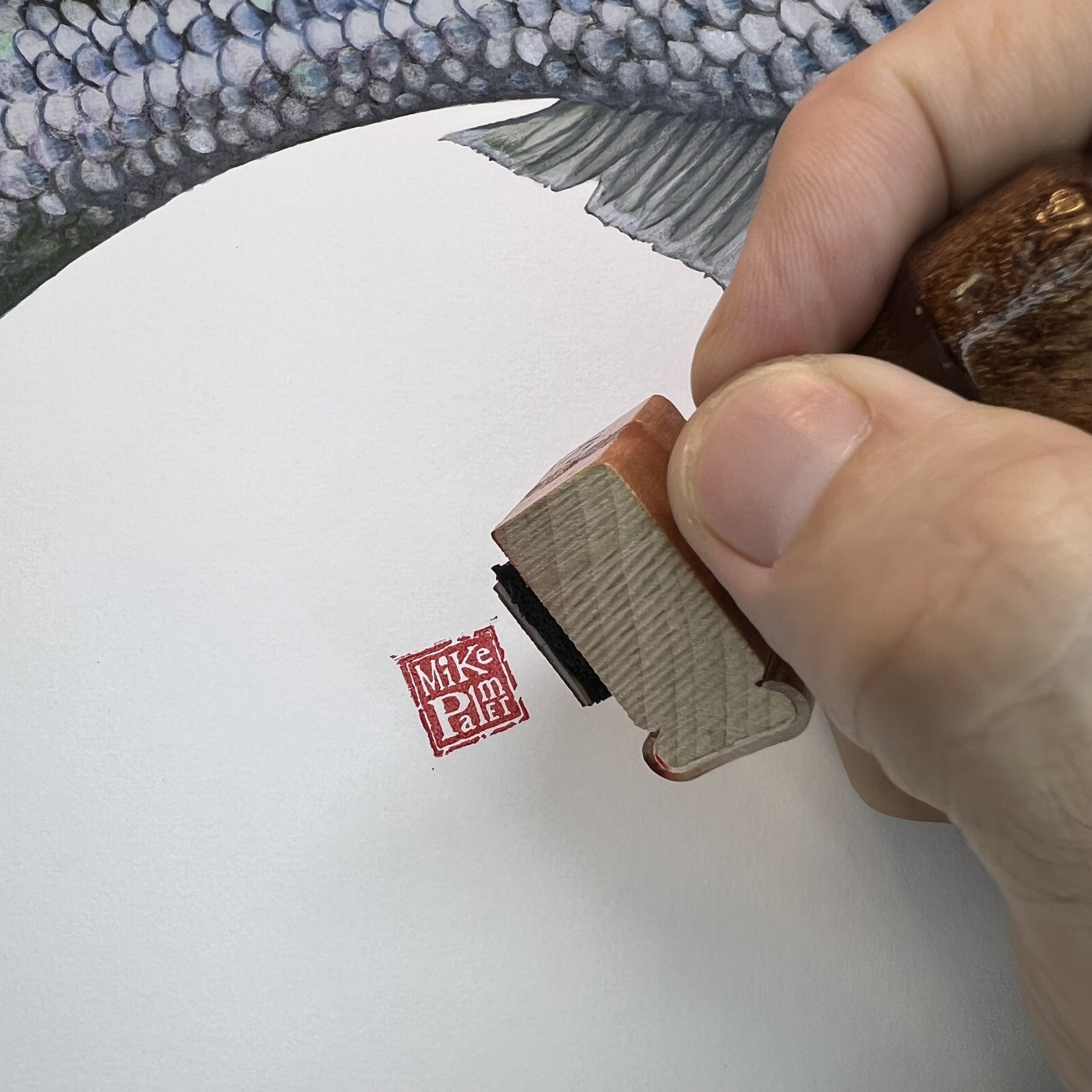Original Fish Prints
Example of 3 different original striped bass prints done by Mike Palmer between 2022 and 2023. Each original hand-colored fish print has a unique coloration. Original hand-colored art and reproduction art prints are available here.
Last year I wrote a blog post about my original hand-colored fish prints. I’ve been wanting to revisit the subject in a follow-up post that pulls back the curtain a bit on my drawing process. I’m often asked how long each fish print takes and I don’t have a great answer - the process of completing a fish print from start to finish is a multi-stage process spread across weeks. The actual hourly time spent on the drawing preparation, reference sketches, graphite grey-scale drawing, photography, digital clean-up, and the final colored-pencil drawing is somewhere on the order of 40-60 hours per fish. Some, more complex drawings like the common octopus can take considerably longer.
There are essentially two-stages to my drawing process - the grey-scale drawing, and the colored-pencil drawing. As a pencil artist, I originally learned the art by doodling with a #2 in the margins of my school notes. There’s a familiarity to the grey-scale drawing that after all these years is where I feel compelled to start my drawing process. I find color to be a distraction early on in the drawing process and prefer to first focus the form and tones of the fish using graphite pencils. Once the grey-scale drawing is complete I produce a giclee print of the drawing on hemp paper. I will then apply colored pencil on top of the giclee print, bringing the fish alive with colors. Because I start the colored pencil stage from the giclee print of my original graphite drawing I can produce my colored-pencil fish prints in less time than starting from scratch while maintaining the originality and uniqueness of the finished product. I can produce original colored-pencil fish prints from any image in the Waquoit Bay Fish Company gallery.
Step 1. Metrics and meristics. The first step in the drawing process is the background research where I gather reference photos and videos, perform calculations on fish proportions, and make notes on body morphology and fin meristics. I watch a lot of videos of fish swimming underwater during this stage so that I can faithfully capture the form of the fish as it would have looked underwater in its natural environment.
The number of reference sketches I make during this step varies by fish species. Some fish take many references sketches, though the striped bass required only two reference sketches before I was ready to move onto the final graphite drawing. It’s taken as many as six references sketches for subjects like the longfin squid.
Step 2. Tones of home.
The next step in the drawing process is the graphite drawing of the fish. Many colored pencil artists will proceed from sketch to colored-pencil stage, but I prefer to do a grey-scale drawing of my subject before moving onto the color stage. This helps me better understand the tones without the distraction of color. I use a pitt matte graphite pencil that allows me to achieve darker blacks than typical graphite pencils. Once the grey-scale drawing is complete I will photograph the drawing in high-resolution, isolate the subject from the background to produce a clean copy of the image, and then produce a giclee print of the grey-scale drawing on hemp paper. After much searching I’ve found hemp paper to be an extremely sturdy, forgiving, and beautiful paper option for colored pencils.
Step 3. Coming alive with color.
Using the giclee print as a starting point for the coloring stage, I then sit down to hand color each print with professional-quality colored pencils. Colored pencil drawing is all about layering, and it takes patience to slowly layer each color, one by one, and then re-color, again, and again.
If one can keep from focussing too much on the finished product, the process can be quite meditative. While the colored pencil drawings may share the same grey-scale origins, each colored pencil drawing that I produce is a unique variation. I am also able to match certain colors, should a customer have specific color preferences or highlights they would like brought out in the fish. If you’re interested in particular color highlights, please email me, or make notes in the ‘special instructions’ during the checkout process.
Step 4. Blending and burnishing.
My colored pencil technique has evolved over time to be heavy handed. I use a thick application of colored pencil, and a reliance on blending techniques to create an almost translucence to my drawings.
Colored pencil is a wax, allowing heavy applications of colored pencil to be easily blended. I will first use colorless-colored pencils or blending sticks to perform a preliminary blending and burnishing. Next I complete the blending process using an alcohol-based colorless marker. The alcohol in the colorless marker dissolves the wax, erasing most of the colored-pencil marks on the paper and creating an almost ‘painted’ look. My finished products are often confused for watercolor, and this look can be attributed to my blending technique
.
Step 5. The hanko stamp.
The application of my hanko stamp signifies the completion of the drawing. Instead of a signature, I stamp all of my original artwork with my personal hanko. I use archival red ink to ensure that the signature maintains the same permanence and integrity as the artwork itself. Applying the hanko stamp is a very personal way that I connect with each piece of art that I create. For a more in depth description of the hanko stamp, please read this blog post.
A completed original colored-pencil print of the striped bass (Morone saxatilis) by Mike Palmer (2023).
Step 6. Frame it and hang it. The final step in the fish print process is to select the framing, hang it on a wall, and enjoy.
Fish prints can be made from any of the fish in the Waquoit Bay Fish Company gallery. If you’re interested in a fish print, or to discuss framing services, please email me. I look forward to working with you!












